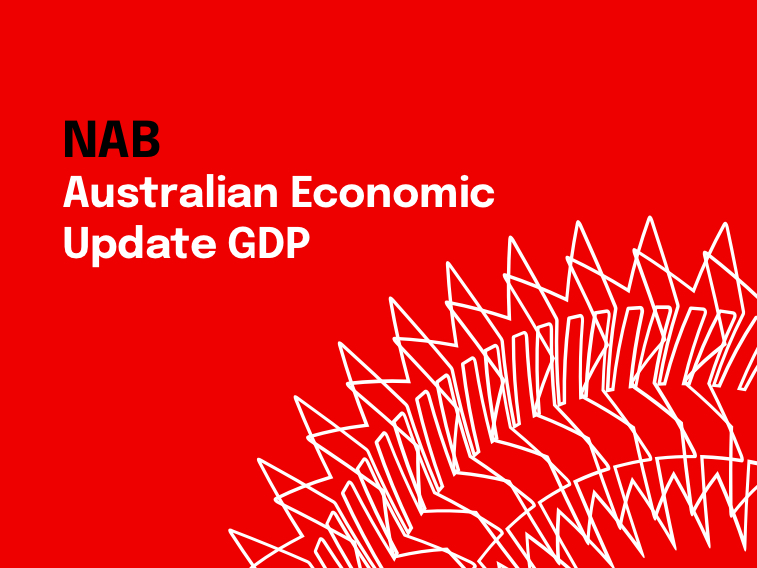Consumers lead the way


Insight
The NAB Quarterly Business Survey showed a continuation of the very upbeat conditions for firms into the September quarter.

Confidence has not been quite as exuberant, with many firms still worried about margin pressures and the demand outlook. Despite that though, we are still seeing solid expectations in terms of the near-term outlook, while business expectations for the longer-term (1 year ahead) outlook have generally strengthened. Investment expectations for the next year lifted further, with most industries pointing to above-average capex. Employment intentions continue to trend higher and firms are now indicating much greater difficulty finding suitable labour. While most industries are performing well in the Survey, conditions in the retail sector deteriorated further, which is a concern given the importance of consumption to economic growth. A tighter labour market and tentative signs of a lift in wage pressures in the Survey could help to bolster demand conditions for retailers, but other challenges will likely remain.
There were no real surprises in terms of the headline numbers from the survey, with business conditions (an average of trading/sales, profitability and employment) and confidence reflecting the trends seen in our monthly Survey. The conditions index rose 2 points, to +15 in the September quarter, driven by improvements in sales and profitability, while employment conditions eased, but are solid enough to suggest further improvement in unemployment over coming quarters. Business conditions are well above their long-run average and at their highest level since early 2008. Meanwhile, the business confidence index eased slightly to +7 points in the September quarter, which is only modestly above the average. According to NAB Group Chief Economist Alan Oster, “to understand what is driving the divergence between confidence and conditions, we have recently started asking firms about the factors that are having the biggest impact on confidence. As you might expect, those indicating deterioration in confidence are particularly concerned about margin pressure and the demand outlook, however, these firms are also saying that government policy and costs – namely energy and wages – are having a major effect too”
A majority of industries recorded an improvement in business conditions during the quarter, and are holding at positive levels, but retail and wholesale were the main exceptions, with retail conditions dropping back into negative territory. “While most of the business sector is doing very well right now, including mining, reads on the retail sector have been quite poor both in our Survey and elsewhere, which is concerning given the importance of consumption to the growth outlook. There are, however, a few reasons to be optimistic when we look at some of the trends evident in the labour market and recent signs of improvement in consumer confidence” said Mr Oster. The Survey’s measure of longer-term (1 year ahead) hiring intentions has picked up, while firms are reporting increased difficulty finding suitable labour, which tends to have a high correlation with the unemployment rate and could foreshadow some upward momentum in wages growth. According to Mr Oster, “we are starting to see that come through in the Survey’s labour cost measure, which is now running well ahead of the wage price index, although part of that is obviously a reflection of strong jobs creation since ours is a wage bill measure”.
The Quarterly NAB Business Survey includes a suite of additional information on how firms perceive the outlook facing their business and the economy. According to Mr Oster, “firms generally expect the recent strength in business conditions to continue, with near term (3 month) expectations for conditions remaining elevated, while longer term (12 month) expectations lifted from already very high levels. Overall, leading indicators from the Survey clearly point to an improving economy, at least in the near-to-medium term. A positive by-product of that has been solid outcomes for hiring intentions and capex plans for the year ahead”
The Survey is still only indicating fairly subdued inflationary pressures, despite apparent concerns around energy and labour costs. The Survey measure of retail prices lifted back into positive territory in Q3, but is still very soft. In terms of the implications, Mr Oster said that “in many ways the Survey is pointing to pre-GFC levels of activity in the economy, although we know this is simply not the case. However, there now seems to be sufficient evidence to suggest that the labour market will continue to improve enough to allow the RBA to pare back some of its emergency stimulus. We think the RBA will commence tightening with a 25bp hike in August 2018, and another hike in November.
For further details, please see the attached documents.
© National Australia Bank Limited. ABN 12 004 044 937 AFSL and Australian Credit Licence 230686.